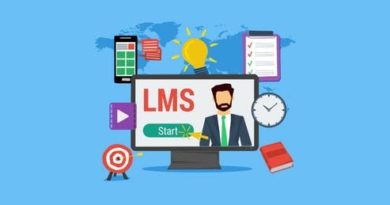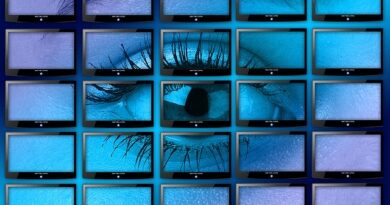The Complete Guide on How to Avoid Copyright Infringement
Copyright infringement can occur when you use someone else’s copyrighted material without permission, resulting in costly legal penalties. In this guide, we will explore how to avoid copyright infringement. Read on to learn more!
What is Copyright Infringement?
Copyright infringement is the unauthorised use of copyrighted material. This can include using someone else’s work without permission, using an unlicensed copy of a copyrighted work, or modifying a copyrighted work without the copyright holder’s permission.
Copyright infringement is a serious offence resulting in monetary damages or criminal penalties. When deciding if a particular use of copyrighted material is an infringement, courts will consider the purpose and character of the use, the nature of the copyrighted work, and the amount of the work used.
If you are unsure whether your use of someone else’s work constitutes infringement, you should consult an attorney.
Purpose of Copyright
Copyright is a form of legal protection that gives creators exclusive rights to their creative works. Under copyright law, creators can reproduce, distribute, perform, and display their work. They can also grant or sell these rights to others.
Copyright law promotes creativity by giving creators financial incentives to produce new works. By ensuring that creators can reap the rewards of their labour, copyright law encourages the creation of new art, literature, music, and other works that enrich our culture.
At the same time, copyright law strikes a balance between the interests of creators and the public by providing limited protections for uses of copyrighted material that are deemed to be fair use. This allows for the free flow of ideas while still protecting the rights of creators.
Works With Copyright Protection
Copyright protection is available for various creative works, including music, audio-visual works, architectural works, literature, sound recordings, and art.
In general, copyright protection attaches to any work fixed in a tangible medium and exhibits a minimum level of creativity. This means that copyright protection can extend to both published and unpublished works.
- Music: Copyright protection is available for both musical compositions and sound recordings. Musical composition is the underlying melody and harmony of a song, while a sound recording is the actual recorded performance of the song. Sound recordings are often referred to as “masters.”
- Audio-visual: Audio-visual works combine visual images with auditory elements such as dialogue or narration. Examples of audio-visual works include movies, television shows, and video games.
- Architectural: Architectural works involve the design of buildings and other structures.
- Literature: Literature includes books, articles, essays, poems, and other written works.
- Sound recordings: Sound recordings are recorded performances of musical compositions or other sounds.
- Art: Art includes paintings, sculptures, photographs, and other visual works.
Works Without Copyright Protection
Copyright protection has been extended to a wide range of works in recent years, but there are still some types of works that are not protected by copyright law. These include works considered in the public domain, such as traditional folktales and government documents.
Additionally, works considered too functional or straightforward are not eligible for copyright protection. This includes things like lists of ingredients or phone numbers and certain types of architecture. As a result, it is essential to be aware of the limitations of copyright law before assuming that a work is automatically protected.
Terms of Protection for Copyrighted Work
Copyright law protects original works of authorship, including literary, dramatic, musical, and artistic works, such as poetry, novels, movies, songs, computer software, and architecture. Copyright law protects other intellectual property, such as trademarks, trade secrets, and patents.
To receive copyright protection, a work must be original and creative. A work is considered “original” if it was independently created by the author and not copied from another source. Courts will also consider whether the work displays a minimal degree of creativity.
Once a work meets these requirements, the author is automatically granted certain exclusive rights in the work. These exclusive rights include copying the work, preparing derivative works based on the copyrighted work, and distributing copies of the copyrighted work to the public.
Copyright protection lasts for a limited time, after which the work enters the “public domain.” The public domain is a collection of works that are not protected by copyright and are therefore available for anyone to use. Works in the public domain include traditional folktales, government documents, and works considered too simple or functional in nature.
Limitations of Copyright Ownership
Even though copyright law grants certain exclusive rights to authors, there are also several exceptions and limitations to these rights. These exceptions and limitations are known as “fair use.” Fair use is a legal doctrine that allows for the limited use of copyrighted works without the author’s permission.
Fair use is determined on a case-by-case basis, and courts will consider several factors, including the purpose and character of the use, the nature of the copyrighted work, the amount and substantiality of the portion used, and the effect of the use on the potential market for or value of the work.
There are also several other circumstances in which copyright protection does not apply. Such work includes:
- Educational use: Copyright law includes several provisions that allow for the use of copyrighted works in an educational setting. For example, teachers and students can make copies of copyrighted materials for classroom use.
- Specialised format: Certain works, such as Braille or audiobooks, are exempt from copyright protection if created in a specialised format for people with disabilities.
- Library and Archives: Libraries and archives are allowed to make copies of copyrighted works for preservation or research.
- Temporary copies: Copyright law allows for creating temporary copies of a work, such as when a computer program is loaded into memory to be executed.
How to Avoid Copyright Infringement?
There are several ways to avoid copyright infringement.
If it’s not your original work, don’t use it
The simplest way to avoid copyright infringement is only to use works in the public domain or that you have the explicit permission of the copyright owner to use.
Understand what copyright laws protect
As we’ve seen, not all works are eligible for copyright protection. If you’re unsure whether a work is protected by copyright, you can always contact a lawyer or do your research to find out.
What you find on the internet is generally not fair game
Just because something is available on the internet does not mean that it’s free for you to use. Unless a work is explicitly marked as being in the public domain, you should assume that it’s copyrighted and take care not to infringe on the copyright holder’s rights.
Following these simple guidelines, you can avoid copyright infringement and ensure that you’re using works legally and appropriately.
Use a copyright infringement protection tool
With a professional copyright infringement protection tool you can forget about copyright infringement forever. If you want to protect your work from being stolen, such a tool is the perfect decision for you.
Conclusion
Copyright law is a complex and ever-evolving area of the law. However, by understanding the basics of what copyright protects and how to avoid infringement, you can ensure that you’re using copyrighted works legally and responsibly.



